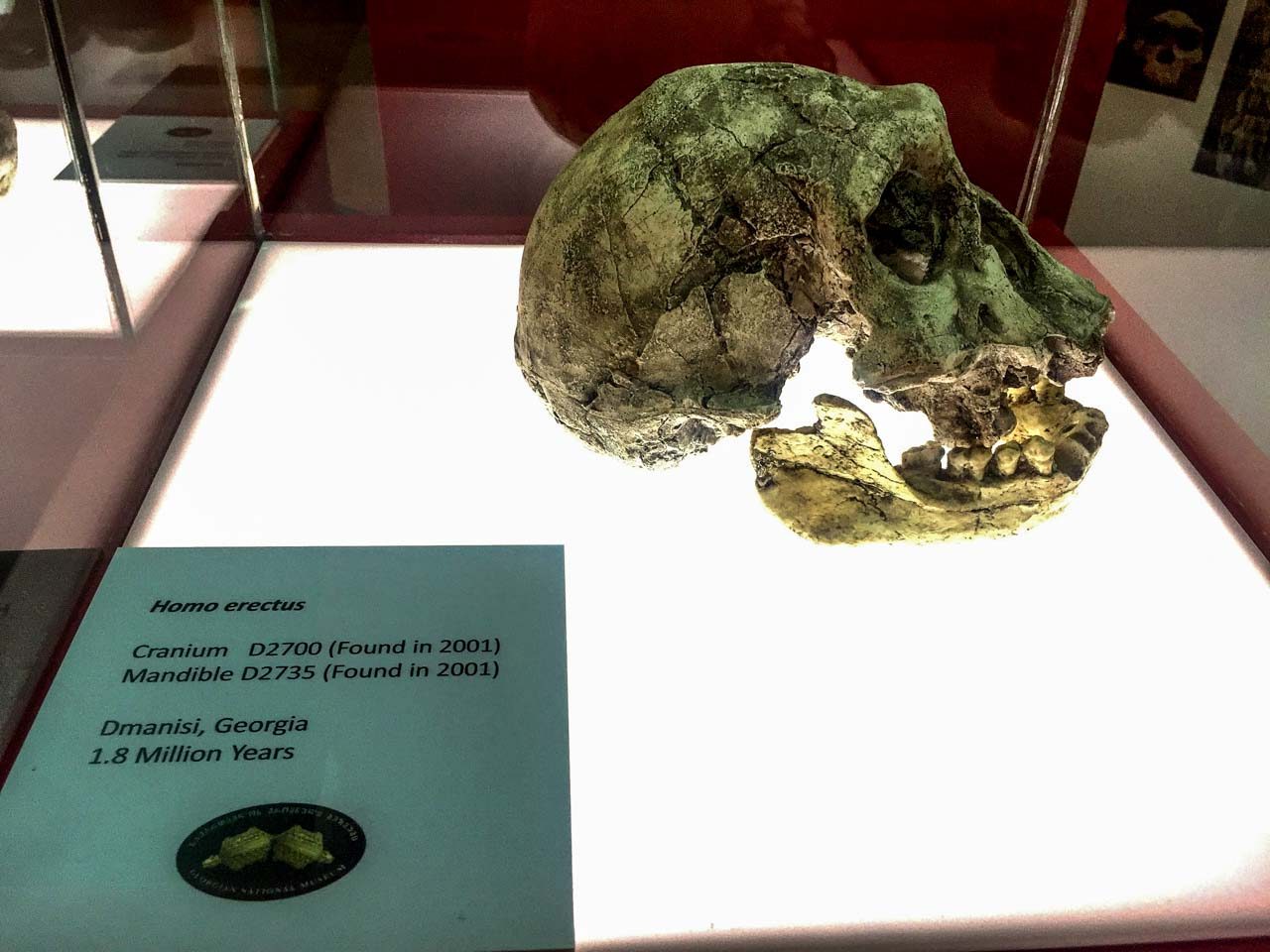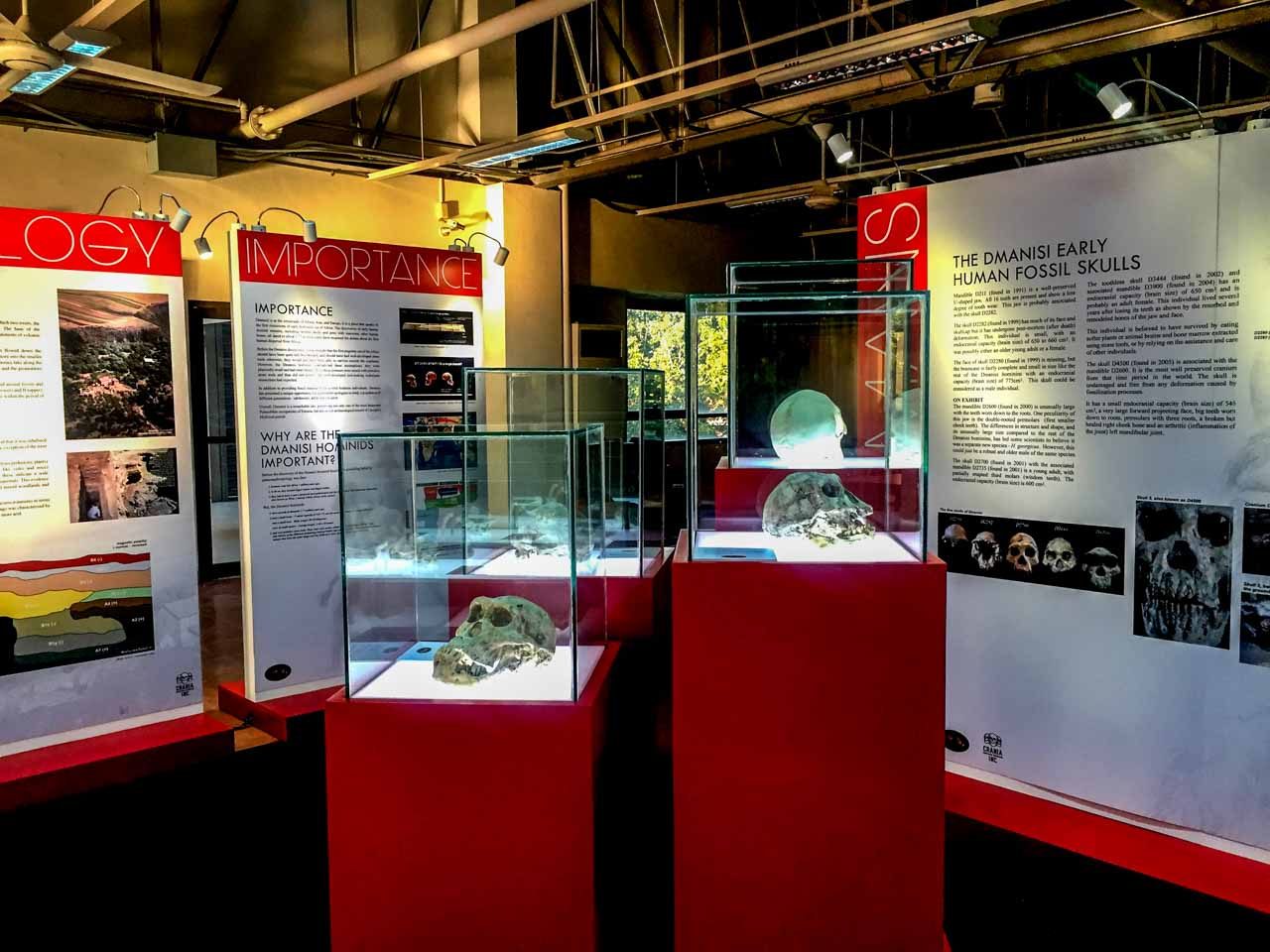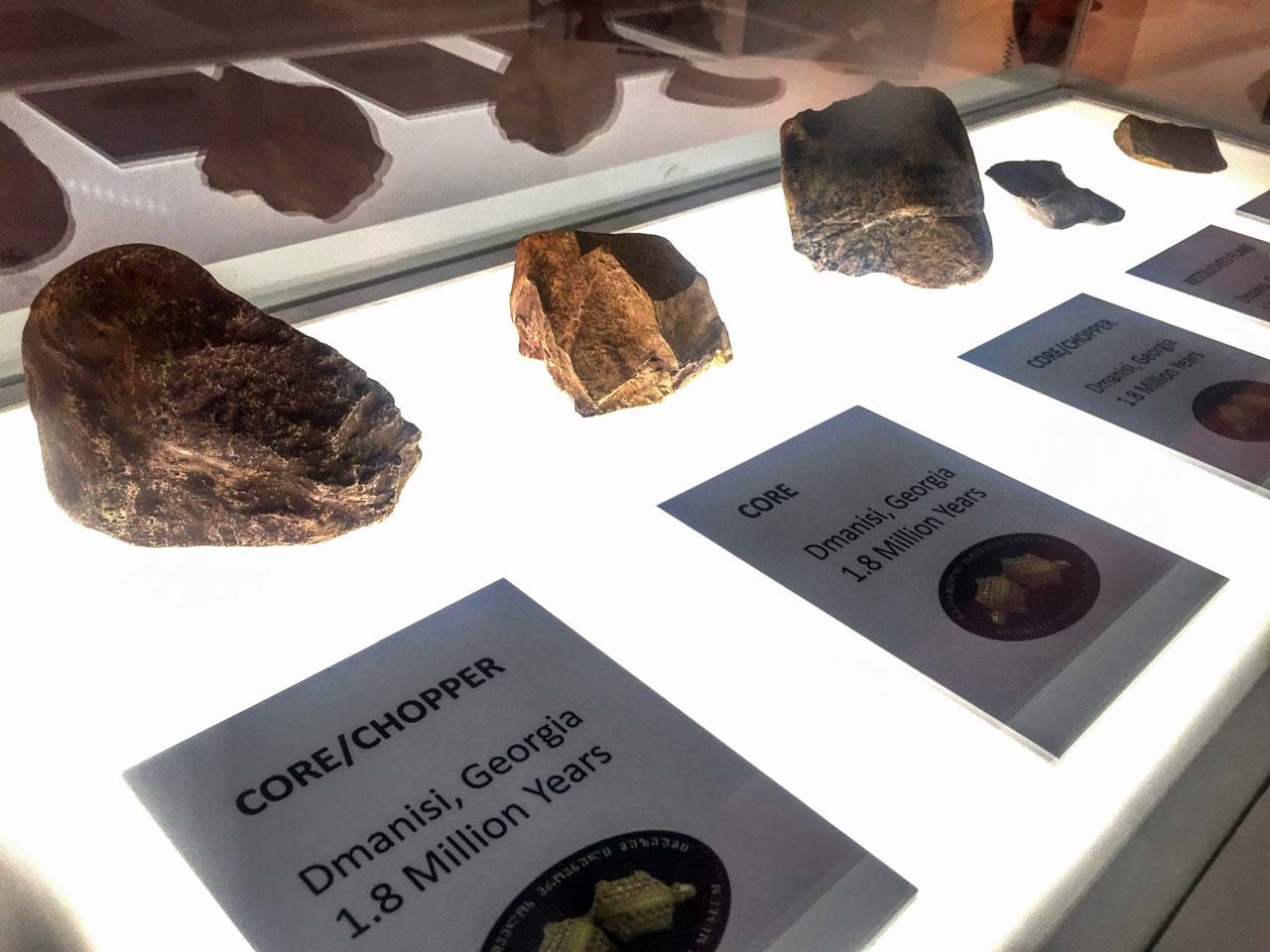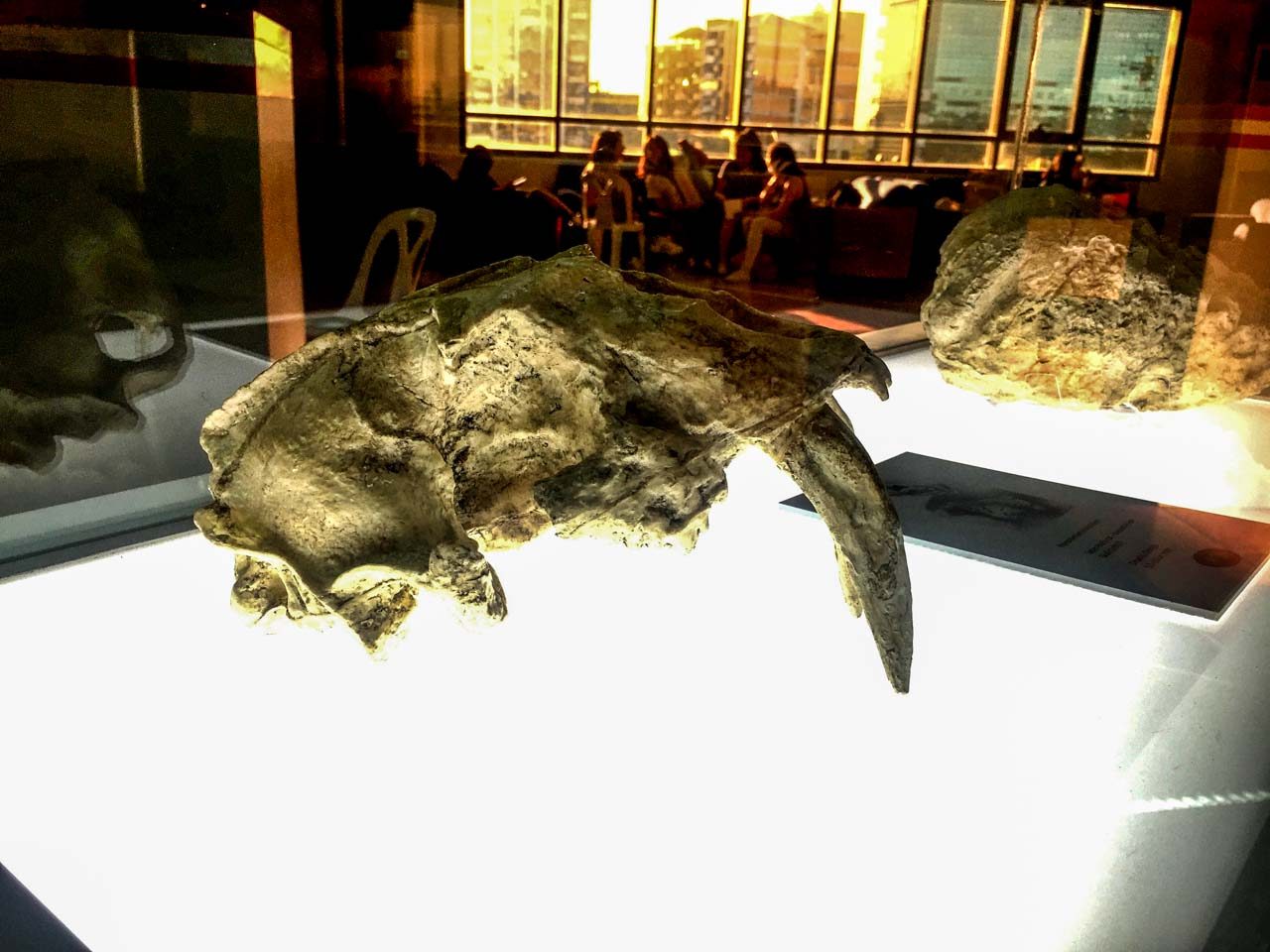SUMMARY
This is AI generated summarization, which may have errors. For context, always refer to the full article.

MANILA, Philippines – One of the first humans who successfully settled out of Africa is now visiting several universities in Manila – through an exhibit.
The exhibit “The First Humans Out of Africa: The Journey of Mankind,” is a set of casts of skulls of the fossilized remains of our ancestors found in Georgia, together with fossils of extinct animals and stone tools that early humans made and used.
Who were the first humans to leave Africa?
Studies have shown that humans only left Africa about 1 million years ago, and that those who ventured out of this continent needed bigger brains and bodies to sustain the journey. They were also believed to have more advanced and sophisticated tools.
However, in 2000, a team of researchers found a number of complete skulls dating back to between 1.77 to 2 million years ago in Dmanisi, Georgia – roughly 4,500 kilometers away from East Africa – which forced scientists to rethink the origins of the first African human exodus.
These skulls were identified as Homo erectus, sometimes referred to as Homo erectus georgicus, according to the team of researchers led by Dr David Lordkipanidze. Lordkipanidze is the scientific head of the Dmanisi expedition and the director general of the Georgian National Museum.
In Dmanisi, the Homo erectus lived in cool grasslands. African animals such as ostriches and giraffes encountered Eurasian wolves and saber-toothed cats. This species believed to have evolved when global climate was changing and they were experiencing accelerated period of cooling and drying. This period also made way for tropical forests in Africa, as well as a desert in the northern part of the continent.

Many earlier studies referred to the species that first traveled out of Africa as Homo ergaster, which were found to have evolved in Africa about 2 million years ago. The term “ergaster” came from the ancient Greek word for “worksman.”
Fossils of H. ergaster were found in Kenya. It has more “ancestral traits” than H. erectus, and might in fact belong to a separate lineage. But Mylene Lising, an archeologist from Crania Heritage Sciences, Incorporated, said that H. ergaster is in fact the same with H. erectus.
“For now, they (scientists) agree in H. erectus [as the first humans that migrated out of Africa]. Sometimes people say Homo erectus georgicus to establish geographic location,” Lising said.
“But I have spoken to the two foremost experts on this matter – Dr Philip Rightmire and Dr Yousue Kaifu – and of course, Dr Lordkipanidze, and they all agree,” she added.
Fossils of H. erectus, more commonly referred to as “the upright man,” were found in a number of locations throughout the world. Apart from Georgia, they were also found Spain, Indonesia, South Africa, Kenya, and China.
Dmanisi skulls in exhibit

The casts used by scientists of the 5 different Dmanisi hominin skulls are included in the traveling exhibit, the most prominent of which is D4500 which was found in 2005. It is the most well-preserved cranium from about 1.77 million years ago.
The skull remains undamaged and free from any deformation due to being fossilized for a longer time. It has a small brain, a very large forward projecting face, big teeth worn down to the roots, premolar teeth with 3 roots each, a broken but healed right cheek bone, and an arthritic left mandibular joint.
Cast of saber-toothed cat, bones of an extinct wolf, and an elephant molar are also included in the exhibit, together with 5 stone tools. All of these artifacts were dated to about 1.8 million years ago, about the same age of the human species found in Dmanisi.

Currently at the Ateneo de Manila University, the exhibit will stay until March 18. It is set to be transfered to the following universities:
- University of Santo Tomas – April 25
- Jose Rizal University – June 6
- University of the East – June 11
- University of the Philippines Diliman – August 8
- De La Salle University – September 12
- National University – November 21
There will also be a series of activities and lectures about human evolution as part of the tour.
The exhibit is presented in cooperation with the Georgian National Museum, with the support of the Georgian consulate. – Rappler.com
Add a comment
How does this make you feel?
There are no comments yet. Add your comment to start the conversation.